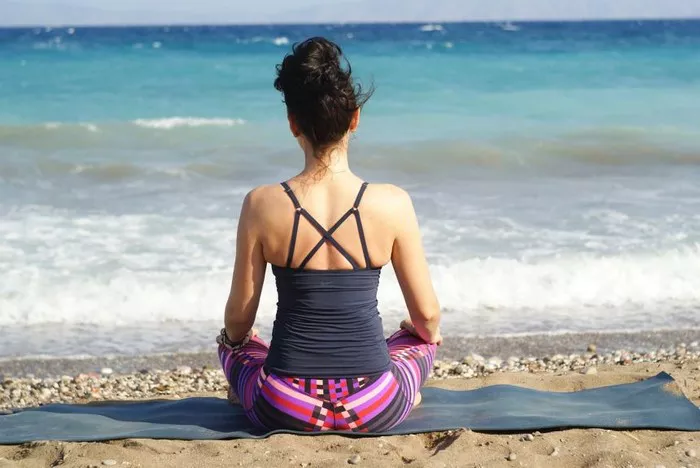Yoga is a versatile and powerful practice that not only enhances physical strength and flexibility but also promotes mental clarity and emotional well-being. Among the myriad of asanas (yoga postures) practiced worldwide, the cobra pose (Bhujangasana) and the sphinx pose (Salamba Bhujangasana) are two very popular backbends that often get confused due to their similarities. While they share some common ground in terms of benefits and posture alignment, there are distinct differences between the two that every practitioner should understand.
In this article, we will dive into the anatomy of both the cobra pose and the sphinx pose, explore their benefits, discuss how they differ from each other, and provide tips on how to practice them safely. Whether you are a beginner or an experienced yogi, understanding these poses will not only help you enhance your practice but also ensure that you are performing them correctly for maximum benefit.
Understanding Cobra Pose (Bhujangasana)
What is Cobra Pose?
The cobra pose (Bhujangasana) is a prone backbend that primarily stretches and strengthens the spine, chest, and shoulders. The name “Bhujangasana” comes from the Sanskrit words “bhujanga” (meaning serpent or cobra) and “asana” (meaning posture), so it is often translated as the “Serpent Pose.” In this asana, the body resembles the shape of a snake or cobra lifting its head and chest off the ground.
This pose is often included in many styles of yoga, especially in sequences like Sun Salutations (Surya Namaskar), where it serves as a counterpose to forward folds and helps to open up the chest and spine.
Steps to Perform Cobra Pose:
Begin in a prone position: Lie on your stomach with your legs extended behind you, the tops of your feet pressing into the ground. Keep your legs slightly apart and your feet dorsiflexed (the tops of the feet pointing downward).
Place your hands on the mat: Position your hands under your shoulders with your fingers spread wide, pressing the palms firmly into the ground.
Engage your legs and core: Before lifting your upper body, engage your thighs and legs to ensure they remain grounded. Draw your belly button toward your spine to activate the core.
Lift your chest: Begin to press into your hands to lift your chest off the ground. As you do this, gently arch your upper back and draw your shoulder blades toward your spine.
Straighten your arms: Keep your elbows slightly bent as you rise, allowing your chest to expand. Aim to create length through your spine rather than forcing a deep backbend.
Look forward or slightly upward: Keep your neck long and avoid compressing your cervical spine. Gaze straight ahead or look slightly upward.
Hold and breathe: Maintain the pose for 15-30 seconds, breathing deeply and evenly. As you exhale, gently release and lower your torso back to the mat.
Benefits of Cobra Pose:
Spinal Flexibility: Cobra pose helps to increase flexibility in the spine, especially in the thoracic (mid-back) region.
Chest and Lung Expansion: It opens the chest and improves lung capacity, which is particularly beneficial for respiratory health.
Strengthens the Back Muscles: By lifting the chest, cobra pose engages and strengthens the lower back muscles, improving overall spinal health.
Stimulates Digestion: The gentle compression of the abdominal organs during the backbend stimulates the digestive system, promoting better digestion.
Mental Clarity: Like many backbends, cobra pose has a stimulating effect on the mind, boosting mental clarity and focus.
Understanding Sphinx Pose (Salamba Bhujangasana)
What is Sphinx Pose?
The sphinx pose (Salamba Bhujangasana) is a variation of the cobra pose, but it is generally considered a gentler backbend. The term “Salamba” means “supported,” which refers to the fact that in this pose, your forearms remain on the ground to support your upper body, unlike in cobra pose, where your palms bear the weight.
In this pose, the chest is also lifted off the ground, but the backbend is not as deep or intense as in cobra pose. This makes it a more accessible option for those with limited flexibility or those seeking a more restorative backbend.
Steps to Perform Sphinx Pose:
Start on your stomach: Lie down with your legs extended behind you, the tops of your feet pressing into the ground. Keep your legs hip-width apart and your feet dorsiflexed.
Position your forearms: Place your forearms on the mat with your elbows directly under your shoulders. Spread your fingers wide and press your forearms into the ground for stability.
Engage your legs and core: Just like in cobra pose, activate your legs and draw your belly button toward your spine to support the lower back.
Lift your chest: Slowly lift your chest off the ground by pressing your forearms into the floor. Keep the back of your neck long and avoid collapsing the chest.
Maintain a gentle backbend: Unlike cobra pose, the sphinx pose doesn’t require you to straighten your arms or push your upper body too high off the ground. The emphasis is on creating a mild backbend while maintaining support with the forearms.
Look forward or slightly downward: Keep your gaze neutral or look slightly downward to maintain a long neck.
Hold and breathe: Breathe deeply and stay in the pose for 30 seconds to 1 minute. To release, gently lower your chest back to the ground.
Benefits of Sphinx Pose:
Gentle Spinal Stretch: The sphinx pose is a gentle way to stretch the spine and improve its flexibility without putting too much strain on the lower back.
Relieves Lower Back Tension: This pose can help to relieve mild lower back pain and discomfort by promoting extension and mobility in the lumbar spine.
Improves Posture: By encouraging spinal extension, sphinx pose can help to correct postural imbalances caused by sitting for long periods.
Opens the Chest: Like cobra pose, sphinx pose also opens up the chest and improves lung function.
Calming and Restorative: Due to its more supported nature, sphinx pose has a calming, restorative effect and can be a great choice for those looking to release tension without overstretching.
Key Differences Between Cobra Pose and Sphinx Pose
While both cobra and sphinx poses involve backbending and share similar benefits, they differ significantly in their alignment, intensity, and the way they engage the body. Below are the key differences between the two:
1. Arm Support:
Cobra Pose: In cobra pose, the hands are placed on the floor beneath the shoulders, and the arms are extended as you lift your chest. This requires more strength and flexibility in the upper body and back.
Sphinx Pose: In sphinx pose, the forearms are placed on the floor to support the upper body. This provides more stability and a gentler backbend, making it more accessible for beginners or those with limited flexibility.
2. Depth of the Backbend:
Cobra Pose: The cobra pose is a deeper backbend, where the chest and upper torso are lifted higher off the floor. This pose requires more flexibility and strength in the spine, particularly in the thoracic and lumbar regions.
Sphinx Pose: The sphinx pose is a more moderate backbend, where the chest is lifted only slightly off the ground. It’s a milder stretch, with the backbend being less intense than in cobra pose.
3. Intensity of the Pose:
Cobra Pose: Cobra pose is more intense and can be challenging for those with tight back muscles or limited spinal mobility. It engages the back muscles, chest, and shoulders more actively.
Sphinx Pose: Sphinx pose is generally less intense and is often considered a more restorative or gentle backbend. It places less strain on the body and is ideal for beginners or those looking for a gentler practice.
4. Use in Sequences:
Cobra Pose: Cobra is often used in more dynamic sequences like Sun Salutations, where it acts as a counterpose to forward folds and helps to open up the chest.
Sphinx Pose: Sphinx pose is usually incorporated into restorative or gentle practices, providing a more supported and calming backbend.
Which Pose Should You Choose?
The decision to practice cobra pose or sphinx pose depends largely on your individual goals, experience, and body condition.
If you are a beginner or have limited flexibility: Sphinx pose is a great starting point. It provides a gentler backbend and supports the body through the forearms, allowing you to build strength and flexibility at a slower pace.
If you are more advanced or want a deeper stretch: Cobra pose offers a more intense backbend and can help to deepen your spinal flexibility. It engages the arms and back muscles more, making it an ideal choice for experienced practitioners.
For restorative practices: Sphinx pose is generally preferred due to its calming and supportive nature, making it a great choice for a restorative or gentle yoga session.
Conclusion
Both the cobra pose and the sphinx pose are excellent additions to your yoga practice, each offering unique benefits for spinal flexibility, posture, and overall well-being. By understanding the differences between these two poses, you can choose the one that best suits your needs, whether you’re looking for a dynamic stretch or a gentle, restorative practice. Keep in mind that the key to both poses is maintaining proper alignment, engaging your muscles appropriately, and listening to your body. With regular practice, both cobra and sphinx poses can help you build a strong, flexible spine, improve your posture, and enhance your overall yoga practice.
Related Topics:






















